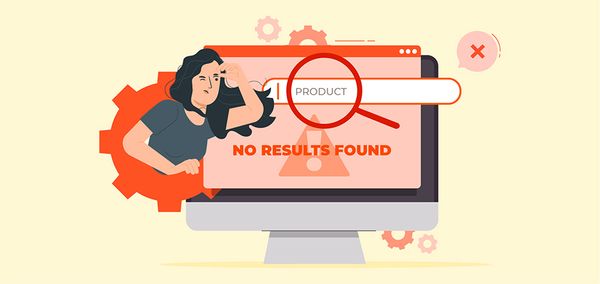How to Create a Comprehensive One-Page E-commerce Website for the Client's Convenience

People in this decade of the twenty-first century have become entirely dependent on the internet. Whether it is the personal life or the professional, digitalization has made our lives dynamic. In the case of business, it is quite obvious that customers and businessmen all prefer virtual transactions over physical ones. In this scenario, e-commerce has evolved as one of the most lucrative and profitable ways of business. And creating a comprehensive e-commerce website can help business owners stand out from competitors.
- Create a Master Plan
- Design the Website
- Write Concise Content
- Focus on Functionality
- Apply Search Engine Optimization
- Integrate Social Media
- Use Proper Analysis and Optimization
So how to make your e-commerce website a comprehensive one? One of the best ways is to convert it to just one page. If people can turn up to your website and cover the entire process of purchasing within just one page, it would be the best thing for them. This easy process can make them come to your website again. Let's have a look at the entire process of making a one-page site for e-commerce.
How to Start a One-page E-commerce Site
Now, let’s dive into how to create a one-page e-commerce website step by step.
1. Greate a Master Plan
Before starting your journey, it is important to craft a plan first. Neither the development process nor making the site live would take a long process. But what exactly you want from your website should be fixed before starting the voyage. Moreover, in this case, you have to focus on three things, the target audience, the purpose of the website, and the wireframe.
Find Target Audience
You have to identify your target audience first. It completely depends on the product you have chosen for your business. Various products are related to people with various demographics, preferences, and purchasing behaviors.
Purpose of the Site
After being sure about your target audience you have to become exact about the purpose of your site. If you want to make it rich and diversified with various things, it should have a separate blog section. But if you have to make it a simple website with just one page. You have to implement all the important things on that particular page.
Uncomplicated Wireframe
Is your goal to generate leads, close deals directly, or just present your products and services? Creating a clean, uncomplicated wireframe will act as a guide for the design and operation of your website, guaranteeing consistency and ease of use.
2. Design the Website
Aesthetics is the only thing that can attract people to any type of phenomenon in our society. Business, especially the e-commerce business is not an exception from that. You have to make your one-page e-commerce website aesthetically rich and attractive.

|
Manage Multiple Stores In One Account Multiple Stores Management - Link and manage multiple stores on different platforms in one place |
It is important to choose a template first, which can go with your brand's Identity. Furthermore, you have to check whether it offers flexibility for customization or not. The site should have simple designs and high-quality images. These images should be seen attractively from various devices like laptops, desktops, tablets, smartphones, etc.
3. Write Concise Content
Content marketing can be portrayed as the cornerstone of effective e-commerce marketing. Along with images, effective content makes your customers feel attracted to the product you are selling. If you want to make your e-commerce website complete, within just one page, you have to create short content. Moreover, you have to remember that they would be beneficial for the customers as well. To achieve the goal, you can do the following three common things.
Clear and Concise
Make the content about your product clear and concise. The clarity of the language can give your customers insights easily. On the other hand, the short length of the content can be fit within a tiny Place. In this highly dynamic and competitive time, everyone wants to make their business global. The simple language of the content in your e-commerce website can break the language barrier and make it understandable for people from any corner of the world.
Portraying the Benefits
In addition, you have to remember that the content must portray the benefits and specialties of your product interactively. As the owner of the business, you know the benefits of your product better. But to make the customers aware of this, you have to portray it on the content skillfully.
Call to Action
Use storytelling techniques to engage your audience on an emotional level and persuade them to make a purchase. Don't undervalue the significance of a compelling call to action; direct visitors toward the required activity, such as contacting your support staff or adding things to their basket.
4. Focus on Functionality
For your one-page e-commerce website to ensure a smooth user experience and increase conversions, functionality is crucial. Here's how you guarantee the best possible functionality:
Easy-to-use Shopping Cart
- Place a shopping cart symbol or button in a visible and accessible location.
- Permit visitors to see and modify the items in their carts without ever leaving the website.
- Give precise directions on how to update, add, and remove goods from the cart.
- Make it easy for customers to check out so that abandonment rates are lower.
Secure Payment Gateway
- Integrate trusted payment gateways that support various payment methods (e.g., credit/debit cards, PayPal, etc.).
- Ensure the checkout process is encrypted with SSL (Secure Sockets Layer) to protect sensitive customer data.
- Display security badges and trust seals to instill confidence in users regarding the safety of their transactions.
- Offer multiple layers of security, such as two-factor authentication, to prevent fraudulent activities.
Intuitive Navigation Menu
- Design a clear and concise navigation menu that categorizes products or services logically.
- Utilize dropdown menus or collapsible sections to streamline navigation, especially on mobile devices.
- Include search functionality with autocomplete suggestions to help users find products quickly.
- Ensure consistent navigation elements across the website for a cohesive user experience.
Robust Security Measures
- Implement measures to protect user data, such as encryption protocols and secure server configurations.
- Regularly update and patch software to address security vulnerabilities and prevent unauthorized access.
- Monitor website traffic for suspicious activity and implement firewalls or intrusion detection systems.
- Inform users about the importance of adhering to security best practices, such as generating robust passwords and refraining from using public Wi-Fi networks for confidential transactions.
Thorough Testing
- Conduct comprehensive testing across various devices (desktops, tablets, smartphones) and browsers to identify compatibility issues.
- Test functionality under different scenarios, including high traffic volumes and concurrent user sessions.
- Utilize usability testing techniques to gather feedback from real users and identify areas for improvement.
- Address any bugs, glitches, or performance issues promptly to ensure a smooth and error-free browsing experience.
5. Apply Search Engine Optimization
After creating your website you have to reach your target audience quickly. This has a scientific process. This technical process is known as Search Engine Optimization, in short SEO. By having a top-notch SEO service you can make the search engine crawlers crawl your pages and index them for the future. The process to make the presence of your one-page e-commerce website bright and visible is described below.
Keyword Research
The first thing would be to research the exact keywords suitable for your product and services. These are the words by which customers generally search. These keywords should have high search volumes but low competition.
Implementation of the Keywords
Integrate these keywords strategically into your website's content, meta tags, and descriptions to improve its ranking on search engine results pages (SERPs). Center your efforts on crafting top-notch, enlightening material tailored to meet the needs and preferences of your specific audience.
Other Factors
Additionally, prioritize factors such as mobile responsiveness, fast loading times, and secure HTTPS connections, all of which contribute to a positive user experience and improved search engine rankings.
6. Integrate Social Media
In today’s interconnected digital world, social media is essential for increasing traffic and interaction. Include sharing options and social media links on your one-page website for e-commerce so that customers can easily share content and products on other networks.
Participate actively in social media interactions with your audience by answering questions, resolving issues, and introducing new goods or special offers. Use influencer collaborations and user-generated content to expand the visibility and trust of your brand in your target market.
7. Use Proper Analysis and Optimization
To get long-term success for your one-page e-commerce website you have to make it engaging and customer-friendly. Therefore, continuous checking is needed on a serious note.
Use powerful analytics tools to monitor important variables like average order value, traffic, and conversion rates. To find trends, patterns, and opportunities for improvement, analyze this data frequently.
A/B tests can be used to test various aspects of your website, such as call-to-action buttons, design, and messaging, to improve user experience and performance. To stay ahead of the competition, keep your website flexible and sensitive to changing consumer tastes and market dynamics. Iterate and improve it frequently.
Conclusion
Careful planning, beautiful design, succinct content, seamless functioning, strong security measures, strategic SEO, social media integration, and ongoing optimization are all necessary when building a full one-page e-commerce website. Businesses may guarantee a user-friendly experience by identifying the target audience, specifying the objective of the website, and creating a clear wireframe.
Effective consumer engagement is facilitated by placing a high priority on information clarity and design simplicity. Including features like a user-friendly shopping cart, safe payment methods, and clear navigation improves usability and increases conversion rates. Maximizing visibility and engagement is achieved by utilizing social media integration and SEO tactics. Long-term success requires constant analytics, optimization, and monitoring.
Visit DSers blog for additional information on e-commerce website optimization and development to keep updated and competitive in the ever-changing online industry.












 Company
Company
 Why Choose DSers
Why Choose DSers
 Blog
Blog
 Help Center
Help Center




 Live Chat
Live Chat